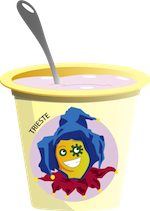Team:Trieste/parts/9
From 2012.igem.org
BBa_K875009
More
Description
LL-37 is a 37-residue, amphipathic, helical human peptide, members of the cathelicidin family of antimicrobial polypeptides (AMPs) that has been shown to exhibit a broad spectrum of antimicrobial activity.
The antimicrobial peptides (AMPs) form an important part of innate immunity, protecting the organism from infection by directly killing invading bacteria. Since pathogenic microorganism shows an increasing tendency to be immune against common antibiotics, AMPs carry remarkable pharmaceutical promise as next-generation antibiotics.
The exact mechanism by which AMPs kill microorganisms is still under debate.
Assembly
Obtained by synthesis
Looking forward
At the beginning, our idea was to use the LL 37 cathelicidin as a toxin, to kill the bacteria from inside. Unfortunately this approach was unsuccessfully as the LL 37 does not kill the bacteria. We thought to use the LL 37 in another way, combined with the T4 holin, (BBa_K112000) a small bacteriophage-encoded proteins that accumulate during the period of late-protein synthesis after infection and cause lysis of the host cell at a precise genetically programmed time. The rational of this construct is to create a synergic action were the holin creates the pores through which the LL 37 can reach his target.

Link to the Registry







 "
"









